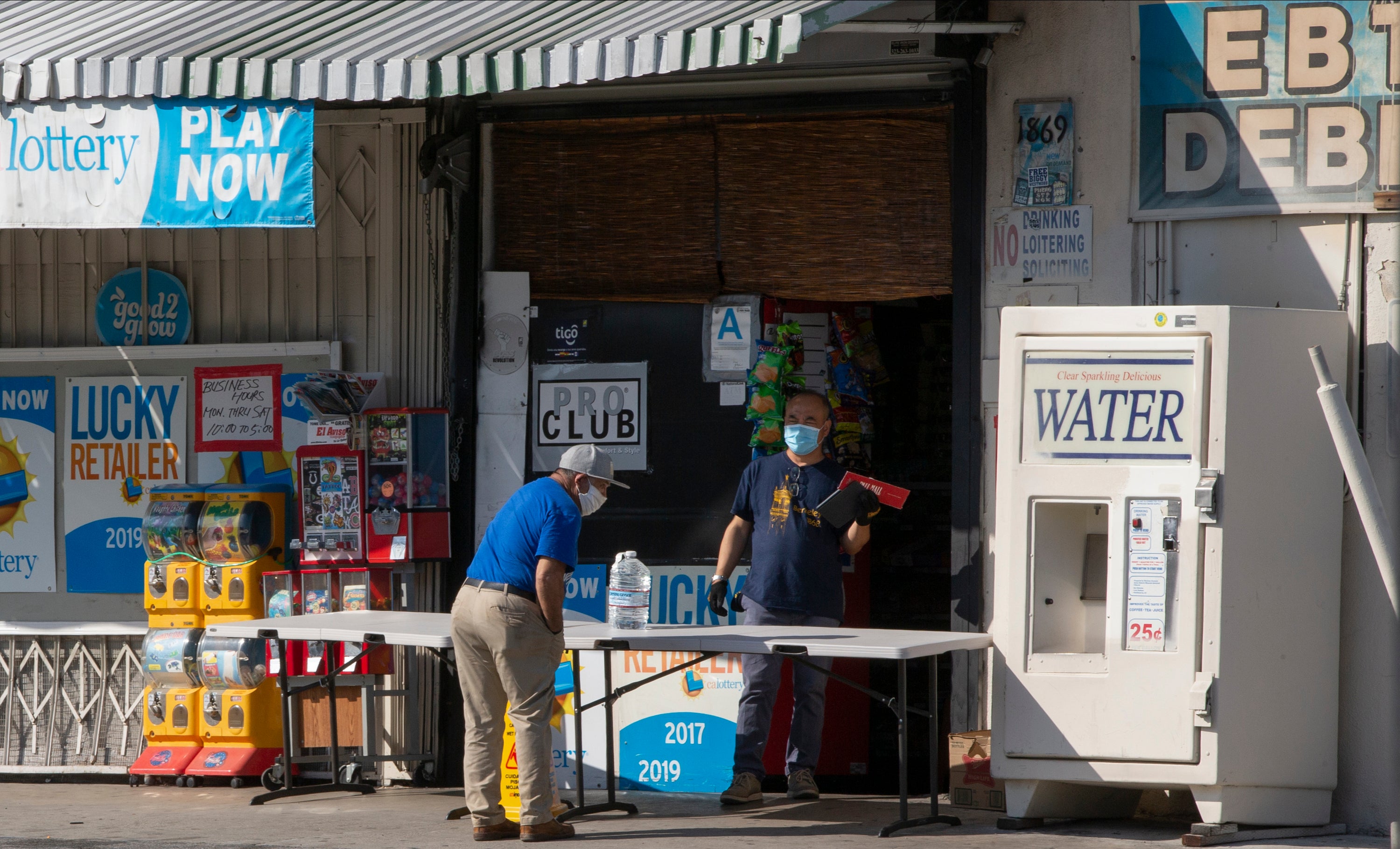States drawing up big wish lists for the COVID relief money
With an influx of federal COVID-19 relief money coming on top of surprisingly strong revenue pictures, governors suddenly have a way to pay for big, expensive undertakings that have long languished on their to-do lists

Your support helps us to tell the story
From reproductive rights to climate change to Big Tech, The Independent is on the ground when the story is developing. Whether it's investigating the financials of Elon Musk's pro-Trump PAC or producing our latest documentary, 'The A Word', which shines a light on the American women fighting for reproductive rights, we know how important it is to parse out the facts from the messaging.
At such a critical moment in US history, we need reporters on the ground. Your donation allows us to keep sending journalists to speak to both sides of the story.
The Independent is trusted by Americans across the entire political spectrum. And unlike many other quality news outlets, we choose not to lock Americans out of our reporting and analysis with paywalls. We believe quality journalism should be available to everyone, paid for by those who can afford it.
Your support makes all the difference.State governments will get a big influx of federal money from the $1.9 trillion COVID-19 relief package that could suddenly enable them to undertake large, expensive projects that have long been on their to-do lists, including high-speed internet for rural areas and drinking water improvements.
The aid plan, approved by Congress in close party-line votes and signed by President Joe Biden on Thursday, includes $195 billion for states, plus separate funds for local governments and schools.
While the package contains considerable short-term financial relief for businesses and individuals who have suffered from the outbreak, its Democratic supporters also see it as a rich opportunity to help states attack poverty more broadly and accomplish the kind of big things government used to do.
Since most state budgets are not in the tailspins that many feared last spring, states can use their share of the money to go way beyond balancing the books and dealing with the direct costs of the coronavirus pandemic.
“There are no words to describe the impact that has on a state that has long had extreme and persistent poverty,” said New Mexico Gov. Michelle Lujan Grisham, a Democrat. “This is exactly the investment that we have always deserved and that we need now more than ever.”
Even Republican governors who have argued against the plan are drawing up ambitious plans similar to what's on the wish lists of Democratic lawmakers and governors.
In Democrat-controlled California GOP-held Idaho, and Vermont, with a Republican governor and Democratic legislative majority, priorities include drinking water and rural broadband projects.
In New Mexico, officials expect to use $600 million to pay off debts to the state’s unemployment fund — a move that would prevent a spike in payroll taxes for businesses — and still have more than $1 billion for projects such as economic development grants, road improvements and others still to be determined.
While the behemoth CARES Act adopted last March included $150 billion for state, local and tribal governments, that help was restricted mostly to direct pandemic-related costs. The new package gives states much more flexibility.
Republican governors are arguing that the economy is already in recovery and that all the spending will eventually need to be repaid by the taxpayers. They also object to a formula that distributes more money per capita to states with higher unemployment rates, which they see as penalizing them for keeping more of their economies open through the pandemic.
“Instead of using the bipartisan blueprint of previous federal coronavirus relief bills, this legislation is literally a wish list for California and New York,” said Georgia Gov. Brian Kemp “It’s a slap in the face for my fellow Georgians.”
The Republicans who control state government in Georgia are working on plans to cut taxes — something being pursued in other GOP-run states, including Arizona and Iowa. But that might run afoul of a provision in the relief package that bars the money from being used to pay for tax cuts.
Around the country, it turns out that the state budget picture generally isn’t as bleak as it was expected to be. Last year's relief spending helped by sending money directly to governments, businesses and individuals. It helped keep workers on the payroll and paying taxes.
Further, investors who supply much of the tax revenue in states like New York and California, which announced a $15 billion surplus in January, had a good year because of the soaring stock market. And the job losses from the pandemic were deepest among lower-wage workers, who account for a smaller portion of tax revenue.
An analysis by the Tax Foundation, a nonprofit that promotes “pro-growth” policies, found that 28 states brought in less revenue in 2020 than 2019. The hardest-hit states included Florida, Hawaii, Nevada and Texas, which rely heavily on tourism and sales taxes.
The amounts states are in line to receive from the COVID-19 relief package exceed the revenue declines in every state, though, and amount to more than 100 times the combined revenue loss, the group found.
Even while objecting to the Democratic measure in general, Idaho Gov. Brad Little outlined some of the same priorities as his Democratic counterparts.
“We know the debt is mortgaged from our grandkids,” he said, “and I will push to use those funds to directly support them through long-range investments in education, broadband and water infrastructure.”
___
Mulvihill reported from Cherry Hill, New Jersey. Follow him at http://www.twitter.com/geoffmulvihill
___
Associated Press reporters Jeff Amy in Atlanta; Adam Beam in Sacramento, California; Susan Montoya Bryan in Albuquerque, New Mexico; Andrew DeMillo in Little Rock, Arkansas; Keith Ridler in Boise, Idaho; and Wilson Ring in Montpelier, Vermont, contributed to this story.